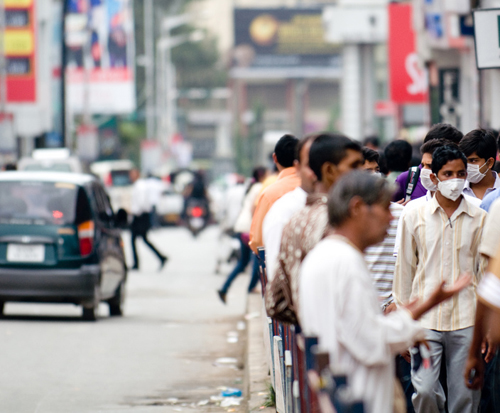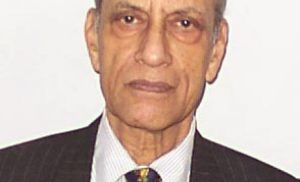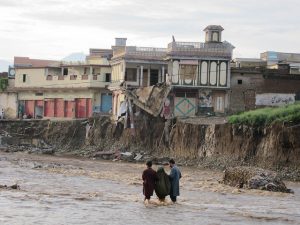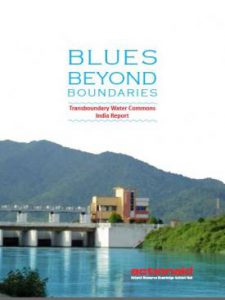It is official now. Air pollution is taking its toll on the lives of people in India. The government has finally admitted that over 35,000 Indians have died in the last nine years due to health problems related to air pollution.
In a written reply to the upper house of parliament Rajya Sabha in August, Environment Minister Prakash Javadekar said 35,616 people died between 2006 and 2015 due to acute respiratory infections. Besides, over 26 million cases of severe respiratory infections were reported in the same period.
The government has so far been in denial about the link between air pollution and cardio respiratory diseases, but has for the first time accepted that air pollution is a serious health issue in the country with fatal consequences.
Though shocking in itself, its estimation may be a mere fraction of the real numbers. Various independent studies suggest that the deaths due to air pollution could be dramatically higher than what the government has presented in parliament.
In 2010 alone, 620,000 premature deaths occurred in India due to air pollution related diseases – that was the shocking finding of the 2013 Global Burden disease report released by the Centre for Science and Environment (CSE), a Delhi-based think tank. It also said that premature deaths caused by particulate air pollution had increased six times since 2010, to the extent that air pollution is now the fifth largest killer in India.
The Indian capital is perhaps the worst hit. In June this year, an international study published in the Environmental Science and Technology Journal stated that due to high particulate matter in the air Delhi was witnessing 10,000-30,000 premature deaths a year – up to 80 deaths daily. This is mind-bogglingly higher than the official 35,000 deaths across the country in nine years.
Javadekar had quoted the study in July end in parliament but chose not to endorse it later. So is the government downplaying the seriousness of the issue?
“The way we are looking at it is like this – the government has been pretty much in denial. We never heard any estimate that so many people are dying due to pollution. This time there are no denials but a number. The message is that people are dying but not to that extent,” said Anumita Roychowdhury, executive director, research and advocacy, CSE. “We have no clue how they arrived at this number (35,000 deaths) but by giving this figure they are disputing the study that says 80 people die in Delhi every day,” Roychowdhury told thethirdpole.net.
A WHO 2014 report marked India among the world’s worst countries in terms of air pollution. Of the 20 most polluted cities globally, 13 are in India. The study was based on the levels of dangerous PM2.5 – tiny particles of size 2.5 microns or less that can easily percolate down the lungs causing serious illnesses like cardio-respiratory problems, lung cancers and allergies and are virtually a nightmare for asthma patients.
Among the top 10 cities in the world that had the most dangerous levels of PM2.5, Delhi fared the worst globally with the city’s air laced with 153 mg of PM2.5 per cubic metre of air in a year – six times higher than the safe limit prescribed by WHO.
Toxic effect of air pollution
Residents of Delhi say they can feel the toxic mix they are breathing in. The worst affected are the elderly, pregnant women and children.
Madhu Bhatnagar, who has been an educator for over 25 years in Delhi and currently teaches at The Shri Ram School, is worried about the health of children. “I began teaching in 1992 when Mexico City was the most polluted in the world. Then it became Beijing and now it is Delhi… And it is affecting children in a big way. Now there are so many children who suffer from respiratory problems, allergies, asthma and it just gets worse with the change in season. Someone should really test the lung power of children. They are the ones who are the suffering the most.”
A 2012 study by the Central Pollution Control Board (CPCB) that examined the health of 12,000 children in Delhi across 36 schools found that every third child in Delhi has either reduced or impaired lungs.
Bhatnagar, who travels often between Delhi and Agra, another polluted city, says she can feel Delhi is more polluted even before she enters the city. “You can feel it in the air. Whenever I come to Delhi, I have to use throat lozenges. I have to go and see an ENT specialist every time and I am always told to take rest, my throat goes bad and I get this burning sensation.”
The Shri Ram School is now spearheading a campaign ‘Save R Lungs’ to raise awareness about air pollution. Teachers, students and parents are now signing a petition addressed to Prime Minister Narendra Modi calling for urgent and stringent action to deal with the health hazard.
“We are now going to put an air quality monitoring unit outside our school so that we can know if it is safe for children to go outside or not and can take necessary precautions,” said Bhatnagar.
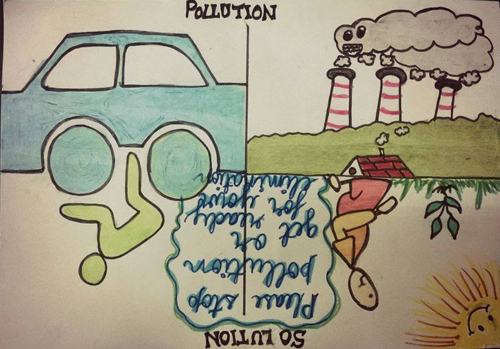
While the school is trying its best to protect its students from the harmful effects of pollutants, experts say the government must tackle the issue proactively across the country.
A 2010 analysis by CSE found that according to the air quality data gathered by the Central Pollution Control Board (CPCB) across India only two of 180 cities that were monitored met the criteria of low pollution for SO2 (sulphur dioxide), NO2 (nitrogen dioxide) and PM10 (particulate matter up to 10 micrometres); 89 cities were found to be critically polluted – up from 49 cities in 2005.
Vehicular pollution
Answering a question in parliament, Javadekar has listed the government’s actions to combat the situation – notification of revised national air quality standards in 2009, setting up of a monitoring network to assess ambient air quality, introduction of cleaner fuel like CNG/LPG, promotion of public transport including metro, implementation of Bharat Stage IV (equivalent to Euro IV) norms in 63 cities and Bharat Stage III (equivalent to Euro III) norms in the rest of the country among others.
But experts say this is not enough to combat air pollution. Unlike Beijing, India does not even have an emergency action plan for citizens on days when pollution levels become critically high. More stringent measures and robust implementation are the need of the hour to curb vehicular pollution in interest of public health.
“While the world is talking about Euro VI fuel, barely a few Indian cities follow Euro IV emission standards for new vehicles while most follow Euro III. Euro IV is seven years behind European standards and Euro III is behind by 12 years,” said Roychowdhury.
Currently, the Indian government is planning to switch to Euro V by 2020 and Euro VI fuel by 2024. But with the rising number of cars in Indian cities and many of them running on cheap but dirty diesel, experts say the country needs to leapfrog to Euro VI by 2020.
“India’s petroleum refineries have the capability to generate fuel with 10ppm sulphur, as required for Euro VI. And it is only when we will implement Euro VI fuel that the whole concern about diesel fuel will be addressed,” said Roychowdhury.
Apart from asking for uniform stringent emission standards for the whole country, experts also say that there should be more emphasis on promoting public transport. And steps need to be taken not just to purchase more buses, but also have an integrated public transport attractive enough to make people leave their cars which are responsible for 70% of pollution in urban air.
Post 2008, the only strong policy that government of India has put in place is revised air quality standards but it needs to have more teeth when it comes to implementation and execution.
“The government needs to put onus on state governments if the levels of toxic particles in their cities go above the norms. Someone has to be made accountable if a city fails to limit its air pollution within the acceptable norms,” said Roychowdhury.
She added, “The government has already utilized low hanging fruits like conversion to CNG, and now it is time for hard measures. The government needs to take it seriously and put a cap on the number of private vehicles like Beijing has.”
